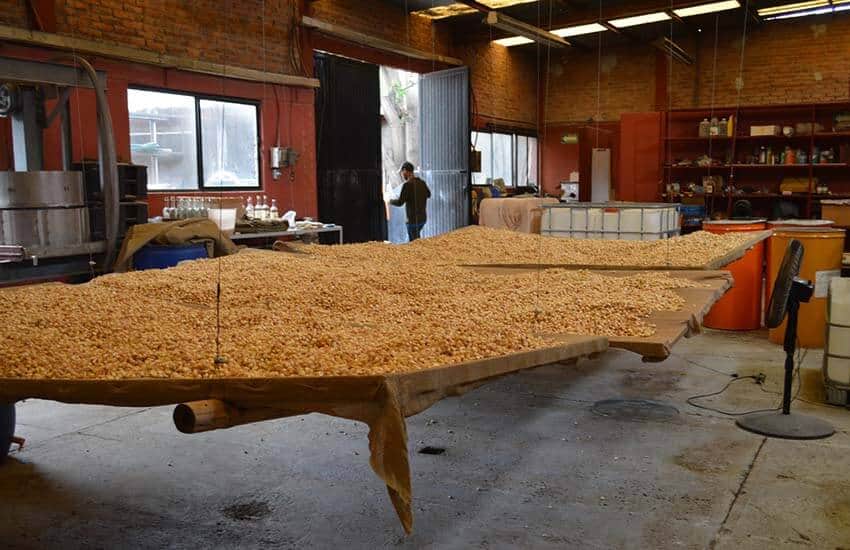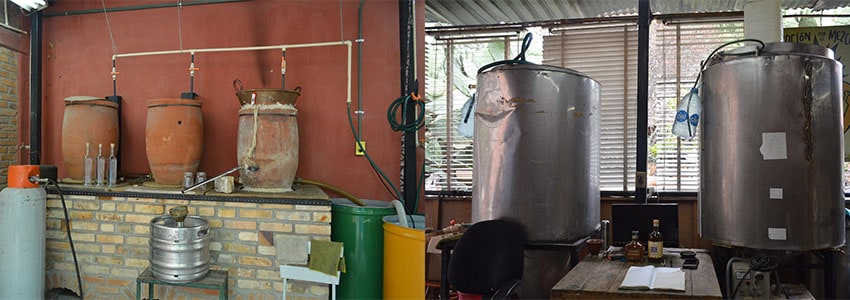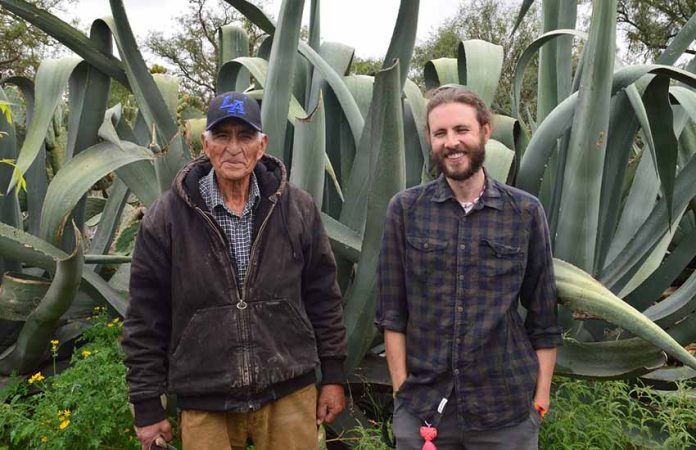Tomás and Carlos Nava just might be the future of alcoholic beverages in San Luis Potosí, and it all started by reviving one of their old hangouts.
La Piquería calls itself a pulque and mezcal bar, but it is really a full-service establishment, with all kinds of beverages and bar food. Located in an old mansion in the historic center of San Luis Potosí, its backstory makes the place special.
Twenty or so years ago, they frequented a bar called El Delirio Azul (Blue Delirium). It was an alternative kind of place, with a large portrait of Che Guevara and frequented by people wanting to change the world.
The bar ran into problems when one owner became involved with resistance to the opening of a mine on San Pedro Mountain by a Canadian company. In the end, this owner became a political refugee, ironically in Canada, and the business withered and disappeared.

The building came up for rent in 2010. The brothers’ fond memories of Delirio Azul prompted them to reestablish a bar in the building, which opened in 2011. At first, the bar was mostly a beer joint, but that would soon change. The business was successful enough, but they wanted to do something distinctive, so they looked to mezcal, which had been very traditional in San Luis Potosí but had fallen out of favor many years ago. Even as late as the early 2010s, it was considered far inferior to vodka and whiskey.
They researched local mezcal as well as those from Oaxaca and Durango. Their city was a little behind the times, but when mezcal’s popularity saw a resurgence, the Navas were ready.
Success with mezcal inspired them to try yet another out-of-favor alcoholic beverage — pulque. San Luis Potosí’s pulque is made from the maguey plant that Mesoamericans brought here in the early colonial period, but the flavor is a bit different than other pulques elsewhere, likely because of the local soils and more arid conditions.
“If we were considered insane for selling mezcal, we were considered raving mad for selling pulque.” Carlos says. The beverage was considered to be something only for the lowest of the low classes, served in places that rival any dive bar in the world.
Undeterred, the brothers found a good, authentic source for pulque in one Tomás Solares, who at nearly 80 still makes it how he learned as a small child on the land he grew up on.
It took a little time, but in a couple of years, the bar went from selling 5 liters a week to over 200 before the pandemic. It’s back up again to over 100 now.
The Navas’ success is not in making or improving mezcal or pulque but rather in offering a bit of the area’s history in an environment that is more comfortable for more kinds of people. Carlos admits it is a kind of “gentrification,” but they are proud that their establishment attracts everyone from the guy who needs bodyguards to the guy working construction.
Going on year 12, La Piquería is now the brothers’ bread and butter, and just the start of their entrepreneurship.

Research into mezcal and pulque has inspired Tomás to try his hand at production. A local family, the Navarros, was instrumental in helping him get a feel for their method of making mezcal, which is distilled in large, heavy clay pots.
But he also gained an appreciation for the values behind their work. For that reason, he did not try to take on mezcal production with them.
In 2019, a friend in the fruit export business found that a client in California was distilling alcohol from prickly pears and asked Tomás if he could do that. He told him, “Give me six months” and bought a small still the next day. This was the start of El Gran Tunal (The Great Prickly Pear Fruit), what he calls an experimental distillery.
Quickly, his attention also turned to Mexico’s heirloom corn varieties. He has joined with other craft and experimental Mexican whiskey makers to not only figure out which corn varieties are best for distilling but also how to define and protect a new and rapidly growing industry.
Nava wants people like him to define what “Mexican whiskey” is before some large international concern does it.
Thanks to an Australian mother, the Navas are native English speakers. This has allowed him to contact and get mentored by craft whisky and moonshine makers in the United States, who are more than happy to work with someone south of the border. From them, Tomás has gained access to new technology and techniques, such as electric coils for heating, which he integrates with what knowledge he has acquired in Mexico.
I learned a LOT about the process of turning Mexican corn into whiskey. Mexican corn holds many promises, especially in flavor profiles, as well as challenges. One challenge is its low alcohol-by-volume (ABV) content. For this reason, 300 kilos of corn at most produces 90 liters of whiskey.
Tomás’ experimentation is not limited to corn. While I was there, his first still was pumping out a delicious gin variant flavored with cardón cactus fruit instead of using juniper berries. He also had batches of spirits made with mango, beetroot and sugar cane. He no longer distills pulque, however, as it produces too little distillate and ruins a lot of pulque in the process.

The Navas are modern businessmen, but both have the social consciousness that drew them to the original bar. They worry about balancing the economic needs of producers with preserving Mexico’s beverage traditions and the threats posed by the modern world.
With two years and a lot of money invested in his small distillery, the concern is not simply altruistic. He says that at any time, someone could come to his door to “ask him what his price is,” and he knows he needs an answer.
Leigh Thelmadatter arrived in Mexico 18 years ago and fell in love with the land and the culture in particular its handcrafts and art. She is the author of Mexican Cartonería: Paper, Paste and Fiesta (Schiffer 2019). Her culture column appears regularly on Mexico News Daily.
